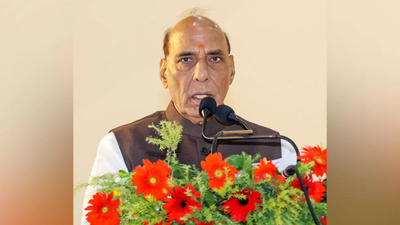
Uttarakhand appears to be ignoring lessons from cities around the world as it considers the proposed 26-km, Rs 6,200-crore Rispana-Bindal Elevated Corridor (RBEC). Experts warn that the project, planned over Dehradun’s twin rivers, the Rispana and Bindal, could become one of the state’s most expensive, environmentally damaging, and unsustainable infrastructure projects.
At an estimated cost that could escalate to Rs 9,000 crore by the time of completion, the RBEC’s price tag rivals Uttarakhand’s combined annual education and health budgets, which are already under strain. Elevated roads are notoriously expensive to maintain, especially when built above riverbeds prone to erosion and flooding. Millions of rupees will likely be spent annually on structural repairs, drainage management, and silt removal. Traffic analysts say that Dehradun’s congestion stems not from a lack of flyovers, but from poor traffic management, insufficient public transport, and high car dependency. For the same cost, the city could introduce hundreds of electric buses, redesign key junctions, and develop non-motorised transport corridors—benefiting far more people while significantly reducing the impact on the environment.
Environmental experts are particularly concerned about the impact on the Rispana and Bindal rivers. Both rivers already suffer from encroachment, pollution, and reduced water flow, and placing massive concrete pillars within their beds could disrupt natural hydrology, trap silt, and raise flood levels during the monsoon. These rivers are living ecological arteries that recharge groundwater, support biodiversity, and absorb urban runoff. Covering them with concrete will worsen water scarcity, intensify heat island effects, and create new flood zones.
International examples provide lessons for Dehradun. In Seoul, the Cheonggyecheon elevated highway was demolished and the stream below restored, reducing flood risks, boosting biodiversity, lowering temperatures, and creating a world-class urban green corridor. A similar approach could transform Dehradun’s rivers without over-engineering them.
Urban planning experts also point out that RBEC offers little long-term relief. Elevated corridors worldwide often create a temporary “traffic mirage,” with initial smooth flow followed by congestion at exit and entry points due to induced demand. According to the Dehradun Master Plan 2041, most traffic jams occur at intersections such as Ballupur, Araghar, Prince Chowk, Darshan Lal Chowk, Balliwala, Bindal, and Saharanpur Chowk. Without stricter traffic discipline, synchronized signals, and parking controls, no flyover can resolve congestion permanently. In addition, four years of construction would bring dust, noise, diversions, and lost business for local traders—challenges that the project’s EIA reportedly underestimates.
Geological and seismic risks add another layer of concern. Dehradun sits near the Main Boundary Thrust and Himalayan Frontal Thrust zones, some of the most active fault lines in the Himalayas. Building a 26-km elevated corridor on alluvial, flood-prone terrain is risky, as even minor tremors or monsoon-induced erosion could destabilize piers, creating a potential hazard.
Technical estimates further highlight the scale and impact of RBEC. The project is expected to consume approximately 2.25 lakh cubic metres of concrete, generate around 3 lakh cubic metres of muck, and emit an estimated 44,000 tonnes of CO₂—equivalent to the annual emissions of 9,000 cars. Transporting and disposing of these materials would require roughly 70,000 truck trips, stressing narrow river valleys and local infrastructure.
Experts believe that a more sustainable path for Dehradun lies in restoring rivers and improving public mobility. Expanding electric bus networks, introducing shuttle loops, and developing park-and-ride systems could reduce congestion while minimising environmental damage. Cleaning and reviving the Rispana and Bindal rivers, coupled with riverfront walking and cycling tracks, would enhance urban liveability and resilience. Intelligent traffic management, strict encroachment removal, and promotion of shared mobility could further complement these efforts. Together, such initiatives could cost less than half of RBEC’s projected expenditure while delivering far greater long-term benefits.
The Coimbatore flyover fiasco and Seoul’s river restoration illustrate the consequences of poor planning and the benefits of reversing mistakes. Dehradun stands at a similar crossroads. Pursuing the RBEC path risks decades of economic strain, environmental degradation, and traffic problems. Opting for river restoration and public mobility, on the other hand, promises a cleaner, cooler, and more livable city. The choice is not merely about convenience—it is about preserving the soul and future of Dehradun.
Disclaimer
Views expressed above are the author’s own.
END OF ARTICLE






